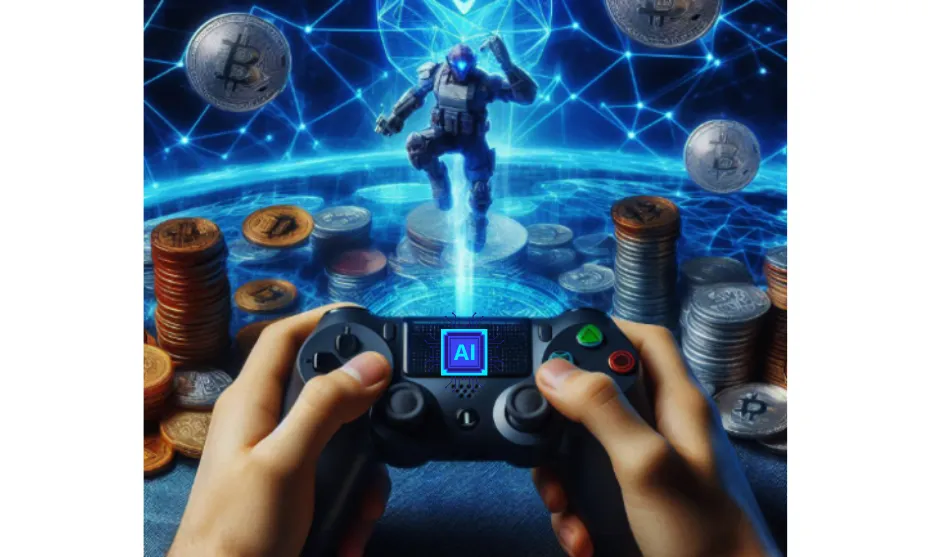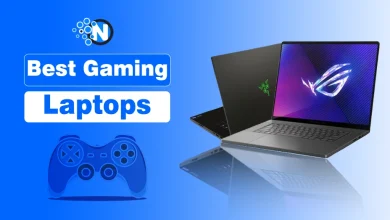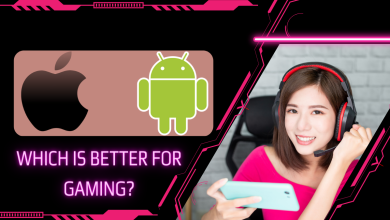AI and Crypto Bring Real Change to How We Play Games

The gaming industry hit $200 billion in revenue this year. Gaming isn’t just about clicking buttons and levelling up anymore. It is transforming into something way bigger, and two major forces are leading the charge: artificial intelligence (AI) and cryptocurrency. Major studios apply AI to develop gaming content, debug it, and customize the player experience, and Blockchain games enable players to hold their items in the form of NFTs and get real money.
If you have also noticed that games are getting smarter, more immersive, and even a little more profitable, you’re not imagining things like me.
In this blog post, I will shed light on how AI and crypto are reshaping the way we play and enjoy our favorite titles.

Blockchain Gaming and Real Digital Ownership
Traditional games operate on a rental model. You buy items, but the game company controls them. If they ban your account or shut down servers, you lose everything. You can’t sell items to other players or transfer them to different games.
Blockchain games work differently. Your items exist as NFTs on a public ledger. You hold the private keys. The game company can’t take them away. You can trade items on open marketplaces or transfer them to compatible games.
Play-to-earn mechanics changed motivation. Completing quests or winning matches earns tokens with real value. Rare items are appreciated based on scarcity and utility. Some players treat gaming as entrepreneurship, breeding valuable creatures to sell.
Players earning tokens from multiple games face wallet security questions. When you accumulate earnings across platforms, you need tools that handle multiple cryptocurrencies without identity verification for every transaction. Many players prefer not to link gaming activity to personal information when play-to-earn becomes significant income.
A player who earned 5,000 dollars in three games desires to control financial data. All transactions are publicly documented in the blockchain, which means that the selection of the right wallet will dictate the degree to which activity is associated with your actual identity. The anonymous Bitcoin wallet list offers players an opportunity to use options that do not require obligatory KYC measures.
Their guide compares 16 types of wallets and provides detailed reviews of the features, level of security, and privacy with each type, so that you can easily find a wallet that fits your gaming requirements. They include air-gapped hardware devices, as well as software wallets that do not carry personal information.
AI Changes How Games are Developed
The AI in games market will expand by $27.47 billion from 2025 to 2029, with a 42.3% compound annual growth rate. That growth reflects how AI transformed game development beyond simple enemy behavior.
Modern game AI studies how you play and adjusts difficulty in real time. Racing games track your driving style and modify opponent aggression to keep races competitive. RPGs analyze your combat preferences and spawn enemies that counter your tactics.
Non-player characters learn from player interactions. They remember if you chose stealth or combat in previous encounters and adjust their patrol routes accordingly. This makes each playthrough feel different, even in games with fixed storylines.
Procedural content generation expanded beyond random dungeon layouts. AI algorithms create entire game worlds based on the parameters developers set. This includes terrain, buildings, NPC behaviors, and quest structures. A process that took level designers months now happens in hours.
Voice recognition lets players speak to characters instead of selecting from dialogue menus. The AI processes natural language, identifies intent, and generates responses. Several AAA titles launched with this feature in 2025, and player engagement rates increased compared to traditional dialogue trees.
Testing changed. AI bots run through games thousands of times, hitting edge cases that human QA testers miss. They find bugs faster, test more combinations of player choices, and identify balance issues before launch. Development cycles have been shortened by 25-40% in the past two years.
When AI and Blockchain Combine
Combining AI generation with blockchain verification creates game assets that are provably unique. AI generates the item, a weapon, character skin, or environment piece, and blockchain confirms authenticity and tracks ownership history.
Smart contracts automate reward distribution. Complete a quest, and the contract mints your NFT to your wallet. These persistent rewards explain why players keep coming back to social games: transparent value developers can’t change.
Cross-game compatibility becomes possible when developers agree on standards. An AI-generated character skin from one game could work in another. Your achievements and items become portable across compatible titles.
Microsoft, Google, Epic Games, and Electronic Arts invested in AI development tools. Polygon, BNB Chain, and Ethereum host thousands of blockchain games. The infrastructure exists. Developers build games that integrate both technologies, applying interactive design and micro-moments that keep players engaged across sessions.
Market Growth and Player Impact
Casual gamers see better difficulty scaling without realizing AI manages it. The game feels fair without being too easy or punishingly hard. Competitive players get AI analytics that review gameplay, identify patterns in losses, and suggest improvements.
Collectors and traders own digital goods with real value. Lost your account to a false ban? Your blockchain items still exist in your wallet. Game servers shut down? Your NFTs persist on the blockchain. Want to sell rare items you spent months acquiring? Decentralized marketplaces exist for that.
Grand View Research estimates that the blockchain gaming market will grow to $301.53 billion by 2030, up from $13 billion in 2024. The old game companies, such as Ubisoft and Sega, are releasing blockchain games since the number of players and income make it worth the cost.
Not everyone wants gaming to become an investment. Some players want good gameplay without token economics or NFT marketplaces. Both approaches can coexist. Technology should serve games, not replace entertainment with speculation.
What Comes Next: Future of Gaming
Challenges: Blockchain games face friction through network latency and transaction fees. The content generated by AI may be repetitive when the algorithms are not advanced enough. They are not core limitations, but fixable problems.
Solutions: Layer-2 solutions drop blockchain transaction costs to pennies. Better AI models create more varied content. Infrastructure improves each quarter as more money and talent focus on solving problems.
Arcade cabinets became home consoles. Local multiplayer shifted to online play. Free-to-play models disrupted premium releases. AI and crypto represent the next evolution in how games work and what players expect from them.




